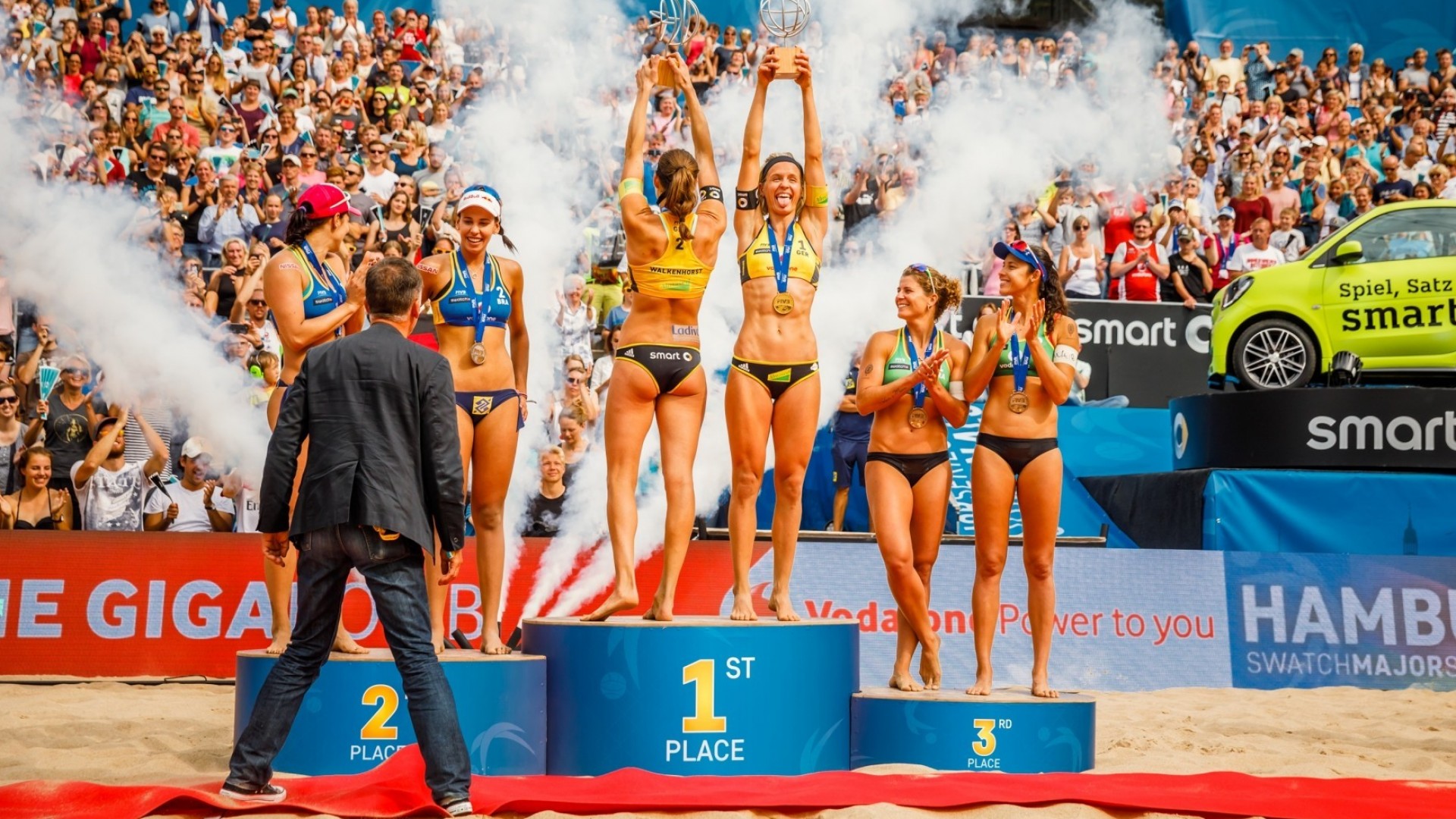How many teams will take part?
A simple answer to a simple question: 48 teams per gender. That’s a total of 96 teams and 192 individual players. That’s a lot of stars and a lot of organizing!
Which of the top teams will qualify?
Good question. If teams have enjoyed a good past 12 months, storming to gold after gold during the Beach Major Series, for example, and have won enough ranking points to be among the FIVB’s top 23 teams in the Athletes Entry Ranking, then they will qualify automatically.
Nice – but what if they’re all Brazilian? How many teams per country can take part?
While fans might love 10 Brazilian, American or German teams at the tournament, that is simply not fair on the rest of the world, is it? And it is the World Championships after all. So, with that in mind, the rules state that no more than four teams from one country can take part in each gender. And yes, that could mean some top teams from Brazil or the USA miss out – so the heat is on in qualification to build up those ranking points…
How many teams will receive a wildcard?
Three teams per gender will be given a wildcard entry into the World Championships. One of these is a team chosen by the organizers, while the FIVB, the governing body of the sport, decides the two remaining spots. Criteria to be granted a wildcard varies and is commonly based on, for example, promotional aspects, technical merits and the athletes’ career. Hey, Misty May-Treanor could make a comeback – and having won the title three times – you’d give her a wildcard, right…?
As hosts, do Germany receive any qualification benefits?
Absolutely. As Hamburg will become the capital of beach volleyball for 10 days during the competition, two teams per gender from Germany will be eligible to qualify for the tournament.
Ok, so that’s 28 teams taken care of – how are the remaining 20 partnerships picked for Hamburg?
The remaining 20 spots in the tournament are decided by the five continental confederations: Asia, Africa, Europe, South America and North and Central American (including the Caribbean). In each confederation, teams will take part in qualification with four teams progressing to the World Championships.
How exactly? Well…
The AVC have their qualification period ending at the end of April where places are based on their performance on the Asian beach tour, with four highest ranking teams qualifying with no more than two per country going to Hamburg.
In Africa, the CAVB’s qualification process also runs until the end of April with an African Beach Volleyball Cup taking place to determine the Hamburg qualifiers. The gold and silver medal winning teams, plus the losing semi-finals will qualify for a spot at the Rothenbaum.
The European method of qualification, regulated by the CEV is reasonably straightforward. The reigning European champions are guaranteed a spot, followed by the three next highest ranked teams in the World Ranking. However, those European champions, Anders Mol and Christian Sørum and Madeline Meppelink and Sanne Keizer, are all but assured of a place through the original top-23 route, and therefore in this case the next (or fourth) highest-ranked European team in the World Rankings go forward to Hamburg.
In South America, the CSV’s four additional qualifiers will come via their Beach Tour rankings, with each country putting forward a duo to compete in Hamburg.
It’s a similar case in North America, with NORCECA sending four teams from the top four nation who are the highest ranked from their Beach Tour.
We will keep you up-to-date of who qualifies for the tournament ahead of the tournament. The drawing of lots – who will play who in the pool play phase, will take place in Hamburg on June 4, so stay tuned!

